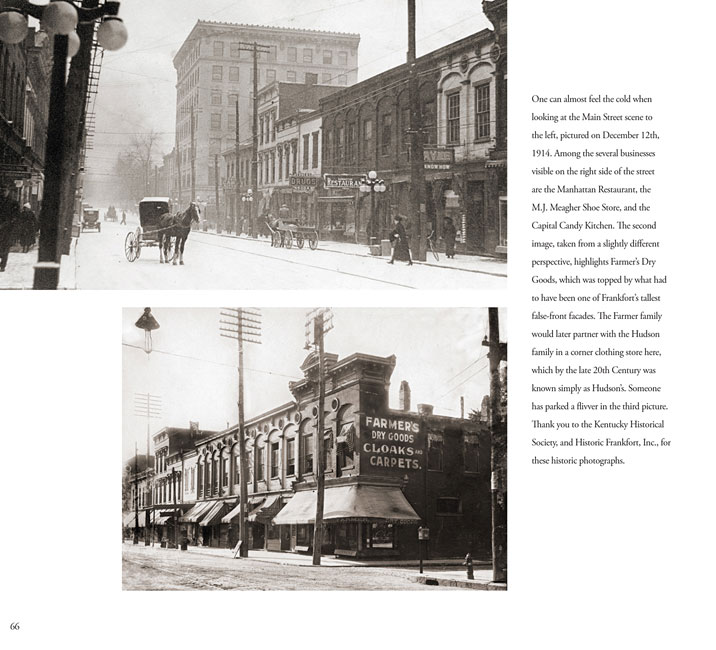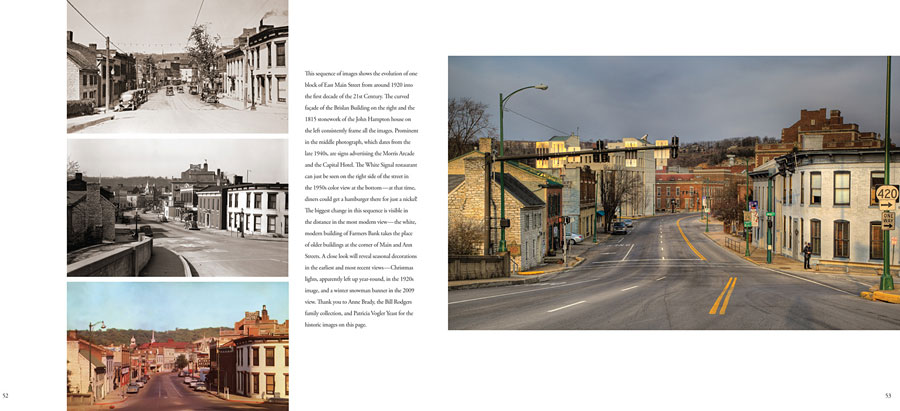
Introduction
This book is about change. In a very unsystematic, hit-and-miss fashion it documents change in Frankfort, Kentucky. By comparing images made long ago and recently, it is easy to see change. It is harder to see progress. While some comparisons do reveal what any rational person would perceive as improvements, far too many of them — in the view of the dedicated historic preservationists who have prepared this book — reveal loss to the community. Loss of fine old buildings; loss of neighborhoods; loss of community; loss of inspiration; loss of memory; loss of individuality and variety; loss of creativity.
In selecting the scenes shown on these pages, we genuinely tried not to be crusaders for the cause of historic preservation. We left out a lot of images available to us that were — especially in the modern views — just too dull, unattractive, and unappealing. Similarly, we have tried not to preach the preservation cause overmuch in the text and captions. But in some instances, the examples of bad planning, poor taste, over-zealous commercialism, and wrong-headedness just could not be ignored — visually or verbally.
Our intent is most certainly not to offend. Our intent is to give pause. We hope most fervently that someone faced with a decision that will change the appearance of this town — change the environment in which we live — will pause long enough to think through his or her plans fully. Perhaps a little of what makes Frankfort such an appealing place in which to live and to visit will thus be preserved. Perhaps another link to the lives and times of our ancestors will be saved. Perhaps something meant to be permanent will be allowed to fulfill its fate. It is good to note that many groups of images here reveal little change in areas where it wasn’t needed or desired — some good things do stay the same. We are convinced that there are enough of these views to make this book a pleasure for most anyone who turns its pages.
Please do not accuse us of being lovers of things that are old just because they are old. We recognize the need for human beings to change the settings in which they live and work. We understand the past well enough to know that we do now want to live in it — we don’t long for the “good old days” of cholera epidemics, slavery, buildings without electric lighting and air conditioning, and horse manure on the streets. But we do like seeing structures and scenes that remind us of from whence and from whom we have come.
Page Samples

“This book is formatted as a visual trip down some of Frankfort’s most used byways. The reader automatically gets updated from the past, confronted by historic images of trolley tracks, horse-drawn vehicles, unpaved streets, awning-covered entrances, telephone poles, and wooden bridges. Through the photography of Dr. Gene Burch we explore the 21st Century Frankfort of today.” Russell Hatter



